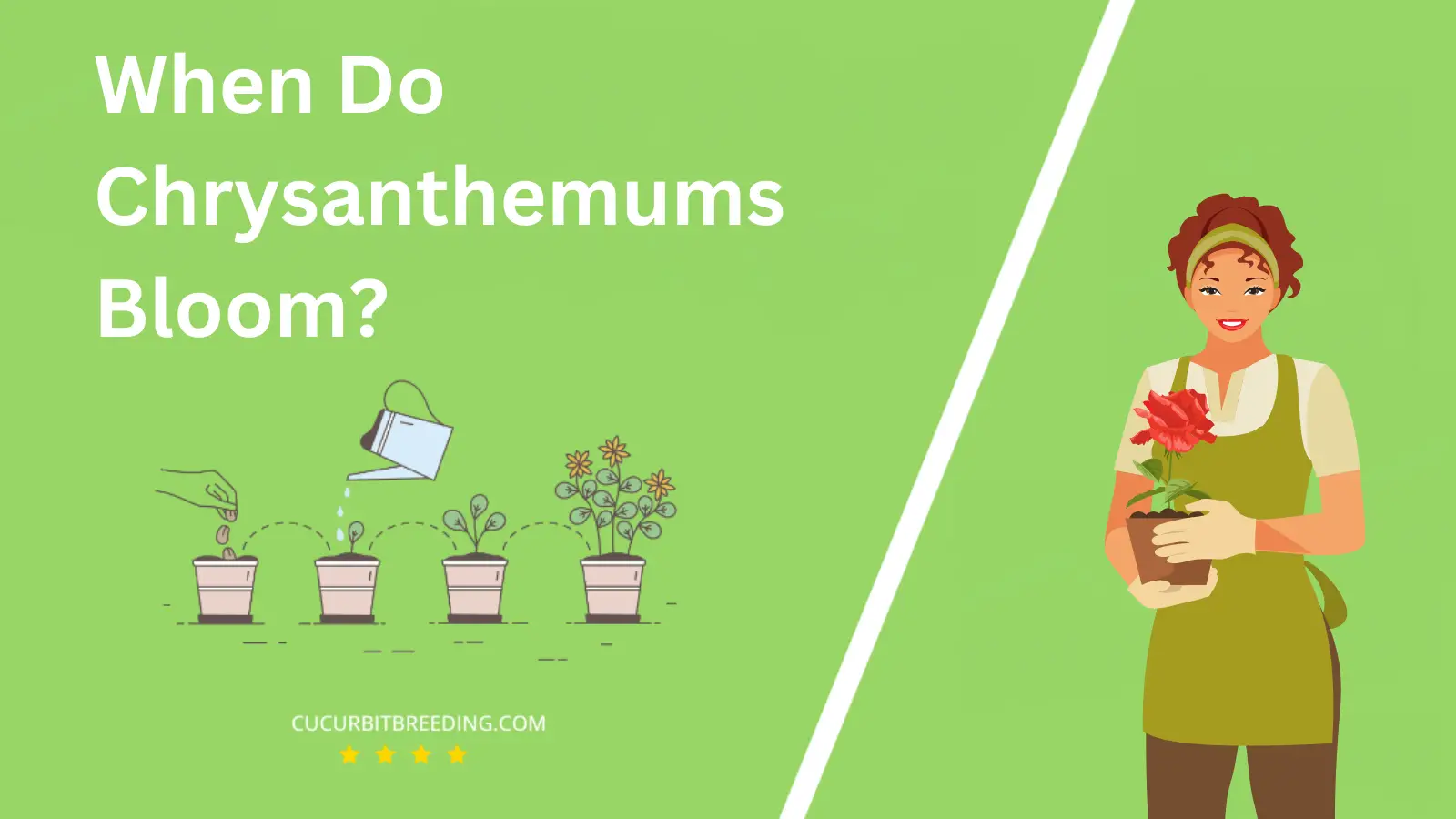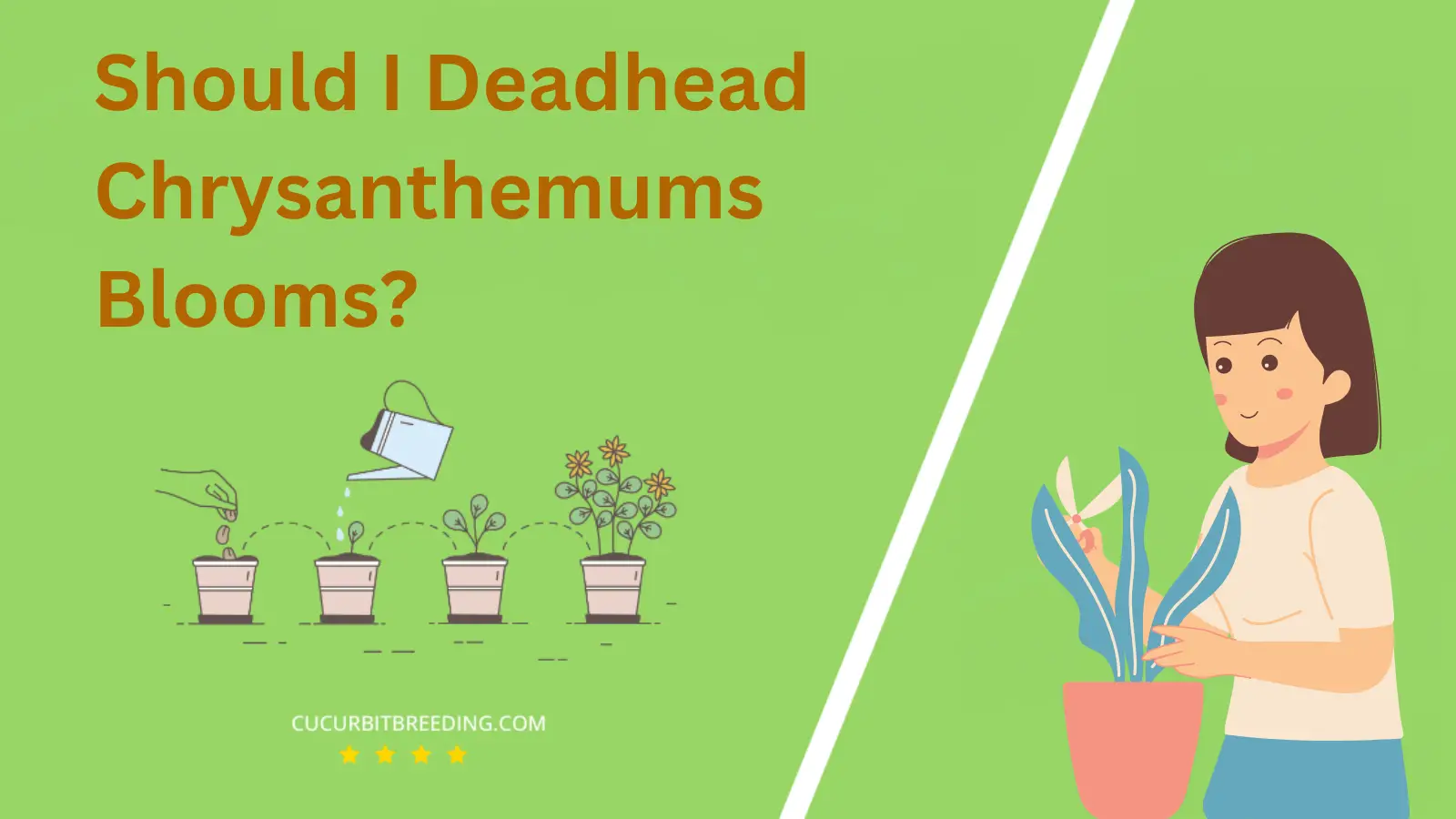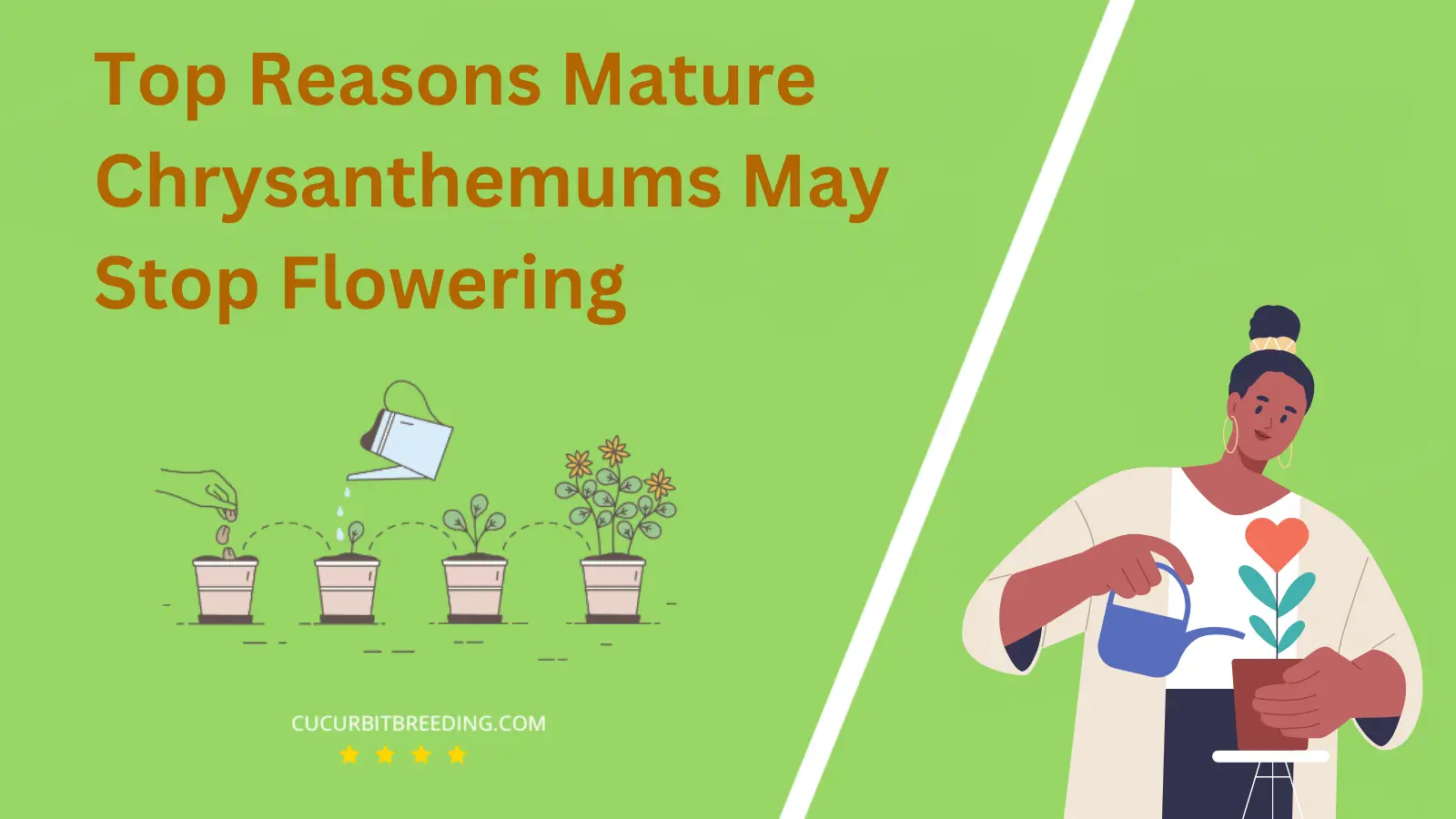
Have you ever wondered, when do Chrysanthemums bloom? These vibrant, spectacular flowers can completely transform your garden into a riot of color.
But timing is everything when it comes to getting the best show from these autumn beauties. Let’s delve into the blooming schedule of Chrysanthemums and how to maximize their display.
When Do Chrysanthemums Bloom?
Chrysanthemums, often referred to as mums or chrysanths, typically bloom in the fall. This is because they are photoperiodic and require short days and long nights to bloom. In most regions, this corresponds to the fall season, specifically from late summer through the fall, until the first hard frost. However, the exact timing can vary based on the specific variety and local climate conditions.
| Stage | Description |
|---|---|
| Germination | Spring (March – May) |
| Growth | Spring (March – June) |
| Blooming | Late summer to fall (August to November) |
| Dormancy | (depending on the variety): (Winter) December to February or (Summer) July to September. |
How Long Do Chrysanthemums Bloom?
Chrysanthemums typically bloom for several weeks, generally from late summer through the fall, depending on the variety and the weather conditions. In the right conditions, the blooming period can extend for approximately 6-9 weeks.
How Light Affects Chrysanthemums Blooms?
Light plays a crucial role in the blooming of chrysanthemums. Chrysanthemums require a certain amount of darkness each day to trigger their bloom cycle. This phenomenon is known as photoperiodism.
Typically, they need 13 to 15 hours of total darkness for a continuous period of several weeks to start forming buds and blooming. Too much light can delay or even prevent blooming. Therefore, controlling the light exposure is essential for the optimal blooming of chrysanthemums.
Will Chrysanthemums Bloom the First Year You Plant Them?
Yes, Chrysanthemums will bloom the first year you plant them. The blooming period for these flowers typically occurs in late summer or fall. However, it’s important to plant them early in the spring to ensure they have enough time to establish themselves before the blooming season begins.
Will Chrysanthemums Bloom Every Year?
Yes, chrysanthemums will bloom every year. These perennial plants are renowned for their ability to regrow in spring after lying dormant during the winter. However, for this to happen, they must be properly cared for. This includes planting them at the right time, usually in late spring or early summer, ensuring they receive sufficient sunlight, and proper watering. Moreover, pruning them back after they bloom can encourage a healthier growth in the next season.

Should I Deadhead Chrysanthemums Blooms?
Yes, you should deadhead Chrysanthemums blooms. Deadheading, which is the process of removing faded or dead flowers, helps improve the plant’s appearance and encourage more blooms. This process prevents the plant from allocating resources to seed production and instead directs energy towards growth and the development of new flowers.
Top Reasons Mature Chrysanthemums May Stop Flowering

Mature chrysanthemums may stop flowering for a few reasons. Insufficient light is one of the primary reasons, as chrysanthemums require at least six hours of sunlight each day to bloom properly. If they are in a shaded area or not getting enough light, they may stop flowering.
Another common reason is improper watering. Both overwatering and underwatering can prevent chrysanthemums from flowering. It’s important to maintain a consistent watering schedule, ensuring the soil is moist but not waterlogged.
Lastly, lack of nutrients can also cause mature chrysanthemums to stop flowering. These plants require a balanced mix of nutrients to bloom, and lack of proper fertilization can hinder their flowering process.